
- Email support@dumps4free.com

Topic 4: Misc. Questions
You have an Azure subscription named Sub1 that contains a resource group named RG1.
RG1 contains an Azure Cosmos DB database named DB1 and an Azure Kubernetes
Service (AKS) cluster named AKS1. AKS1 uses a managed identity.
You need to ensure that AKS1 can access DB1. The solution must meet the following
requirements:
• Ensure that AKS1 uses the managed identity to access DB1.
• Follow the principle of least privilege.
Which role should you assign to the managed identity of AKS1.
A. For R61, assign the Azure Cosmos DB Data Reader Role role.
B. For Sub1. assign the Owner role.
C. For RG1, assign the Reader role.
D. For DB1, assign the Azure Cosmos DB Account Reader Role role.
You have an Azure AD tenant that contains the users shown in The following table.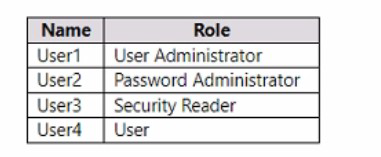
You enable self-service password reset (SSPR) for all the users and configure SSPR to
require security questions as the only authentication method.
Which users must use security questions when resetting their password?
A. User4 only
B. User3and User4only
C. User1 and User4only
D. User1, User3, and User4 only
E. User1, User2, User3. and User4
You have an Azure subscription that contains the following virtual machine.
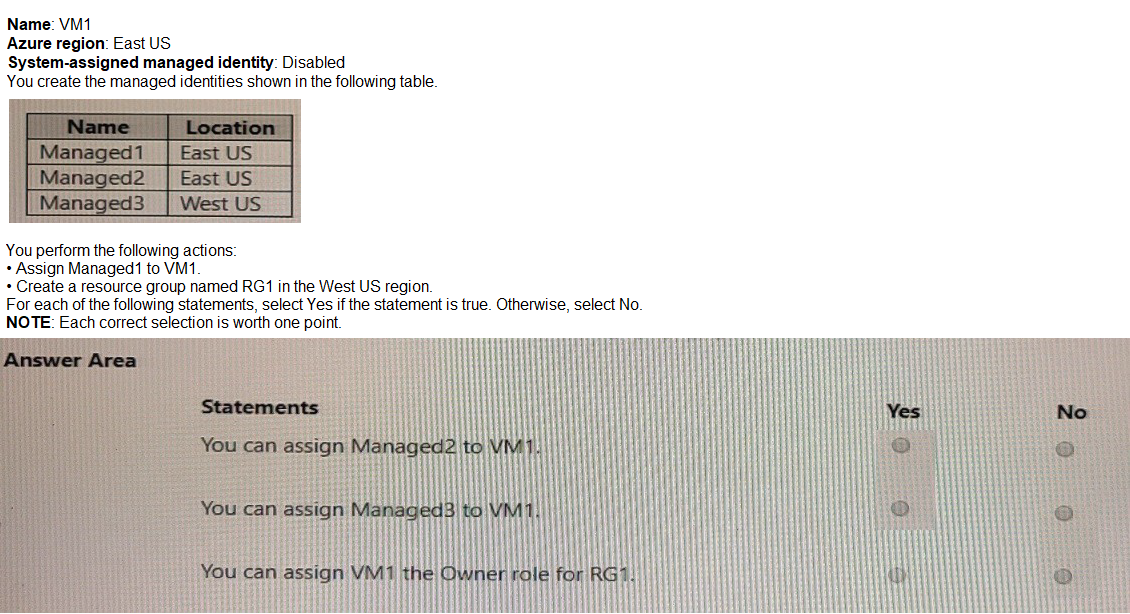
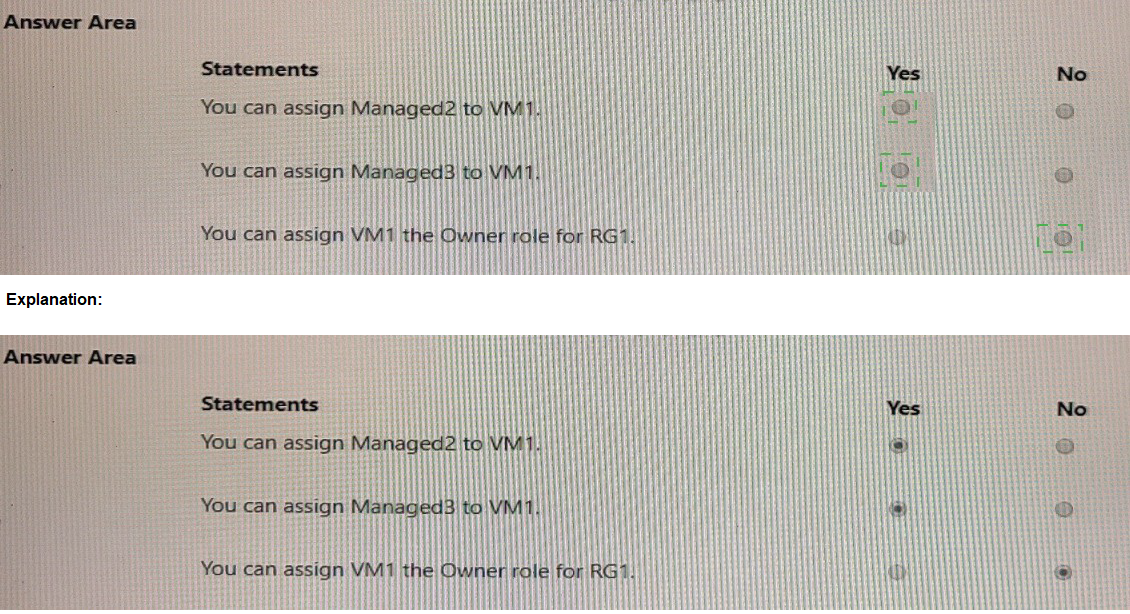
You have a Microsoft 365 tenant.
All users have mobile phones and laptops.
The users frequently work from remote locations that do not have Wi-Fi access or mobile
phone connectivity. While working from the remote locations, the users connect their laptop
to a wired network that has internet access.
You plan to implement multi-factor authentication (MFA).
Which MFA authentication method can the users use from the remote location?
A. a notification through the Microsoft Authenticator app
B. email
C. security questions
D. a verification code from the Microsoft Authenticator app
You have an Azure Active Directory (Azure AD) tenant that has Security defaults disabled. You are creating a conditional access policy as shown in the following exhibit.
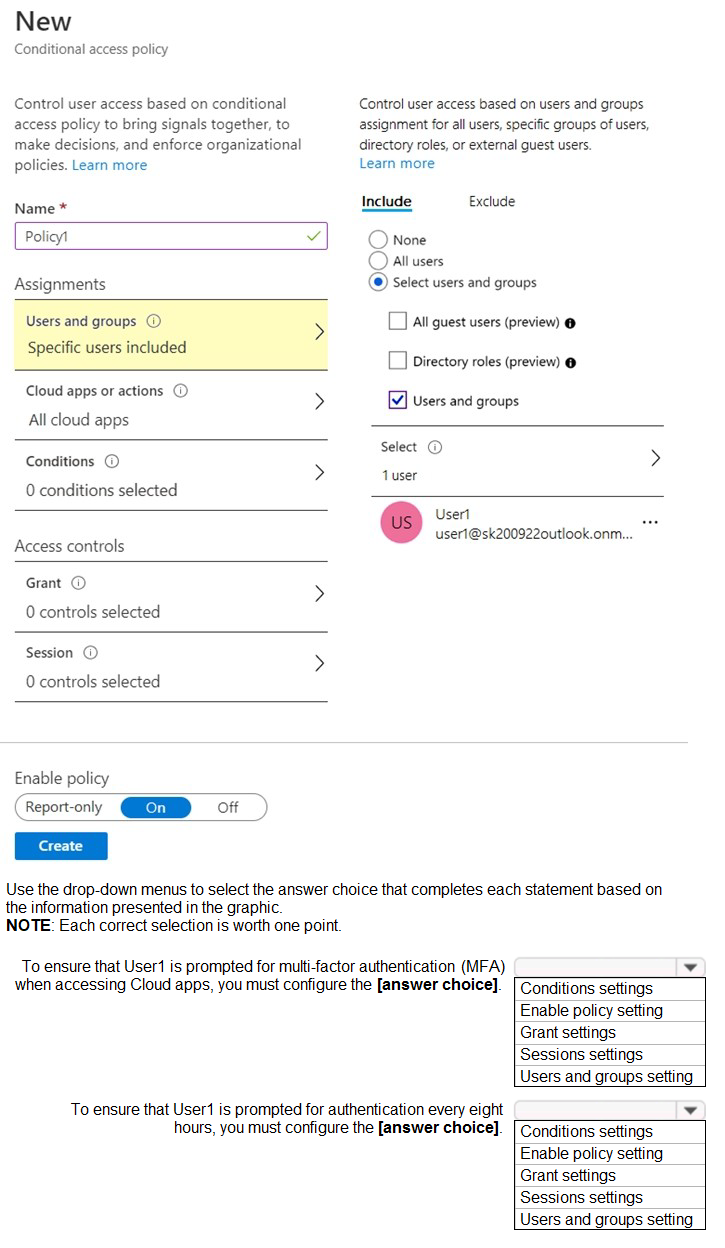
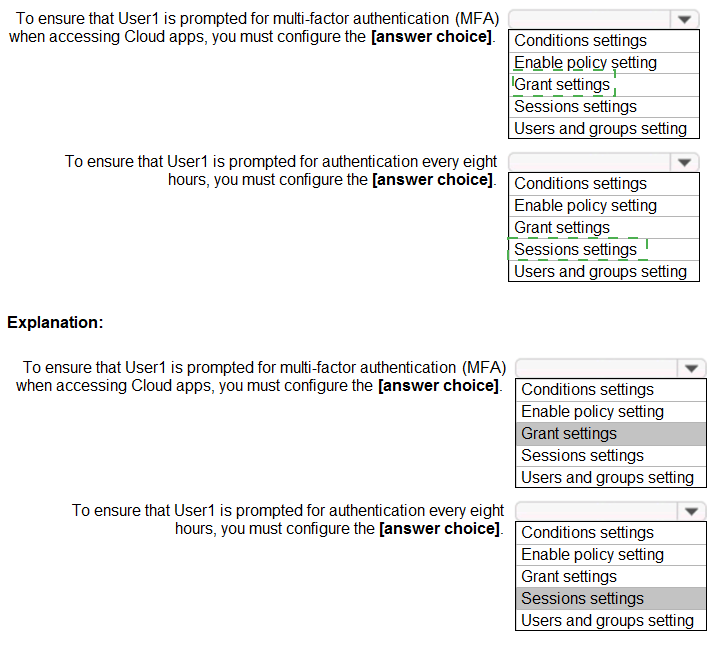
| Page 4 out of 61 Pages |
| Previous |